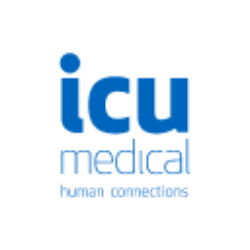
ICUI
ICU Medical, Inc.
$148.44
-0.7
(-0.47%)
| Exchange: | |
| Market Cap: | 3.664B |
| Shares Outstanding: | 8.329M |
About The Company
| Sector: | Healthcare | |||||
| Industry: | Medical – Instruments & Supplies | |||||
| CEO: | Vivek Jain | |||||
| Full Time Employees: | 15000 | |||||
| Address: |
|
|||||
| Website: | https://www.icumed.com |
ICU Medical, Inc., together with its subsidiaries, develops, manufactures, and sells medical devices used in infusion therapy and critical care applications worldwide. The company’s infusion therapy products include needlefree products under the MicroClave, MicroClave Clear, and NanoClave brands; Neutron catheter patency devices; SwabCap and SwabTip disinfecting caps; Tego hemodialysis connectors; ClearGuard HD, an antimicrobial barrier cap for hemodialysis catheters; and ChemoClave and ChemoLock closed system transfer devices, as well as Diana hazardous drug compounding system for the preparation of hazardous drugs. It also provides IV therapy and diluents, such as sodium chloride, dextrose, balanced electrolyte solutions, lactated ringer’s, ringer’s, mannitol, sodium chloride/dextrose, and sterile water; and irrigation comprising sodium chloride and sterile water irrigation, physiologic solutions, ringer’s irrigation, acetic acid irrigation, glycine irrigation, sorbitol-mannitol irrigation, flexible containers, and pour bottle options. The company offers infusion pumps under the Plum 360 and LifeCare PCA brands; IV mediation safety software, including ICU Medical MedNet, an enterprise-class medication management platform that connects smart pumps to hospital’s electronic health records, asset tracking systems, and alarm notification platforms; and related professional services. It also provides critical care products, such as Cogent 2-in-1 and CardioFlo hemodynamic monitoring systems; TDQ and OptiQ cardiac output monitoring catheters; TriOx venous oximetry catheters; Transpac blood pressure transducers; and SafeSet closed blood sampling and conservation systems. The company sells its products to acute care hospitals, wholesalers, ambulatory clinics, and alternate site facilities, including outpatient clinics, home health care providers, and long-term care facilities. ICU Medical, Inc. was founded in 1984 and is headquartered in San Clemente, California.
Click to read more…
Revenue Segmentation
EPS
Earnings Call
Income Statement
(* All numbers are in thousands)
Balance Sheet
(* All numbers are in thousands)
Cash Flow Statement
(* All numbers are in thousands)
Analyst Estimates
(* All numbers are in thousands)

